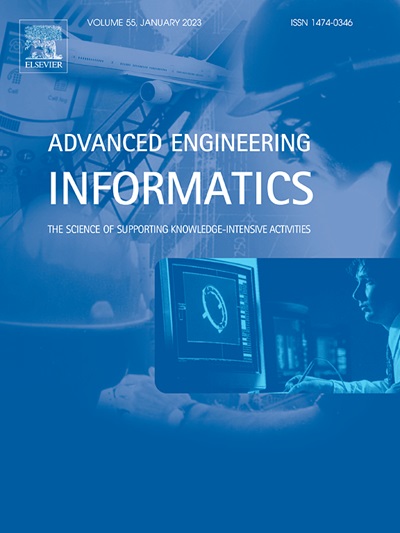Geometric spatial constraints network for slender and tiny surface defect detection
IF 8
1区 工程技术
Q1 COMPUTER SCIENCE, ARTIFICIAL INTELLIGENCE
引用次数: 0
Abstract
Detecting defects on aircraft impeller surfaces is challenging due to the thin and fragile structure of certain defects, as well as their varying scale and geometry. To address these two challenges, we propose the Geometric Spatial Constraints Network (GSCNet) for precise impeller defect detection. First, we develop an automatic image acquisition equipment to capture high-quality data of impeller surface defects. Subsequently, we introduce GSCNet, which comprises two main components: Rich Semantic Information Representation (RSIR) and Spatial Correlation Awareness (SCA) to detect surface defects. Within RSIR, we propose a geometric-constraints-guided, deformable-convolution-based module named Slender Partial Convolution (SPC), along with a Multi-Geometric Feature Fusion (MFF) module. SPC captures the features of tubular structures without redundant information by aligning the convolution kernel shape with slender defects, while MFF facilitates the fusion of various semantic features, thereby enhancing the ability to extract semantic information. In SCA, we introduce a novel attention mechanism that captures inherent spatial correlation to enhance the high-similarity defects classification capability by modeling representative spatial information. Finally, we design a similarity-enhanced loss function to further improve the detection of multiple geometric defects simultaneously, as it alleviates the scale sensitivity of IoU-based loss. Comparative experiments demonstrate that our framework outperforms all representative detection models, achieving 83.2% mAP on the AISD dataset, which surpasses the second-best model by 3.8%. The first set of ablation experiments confirms the effectiveness of each module within the framework. The second set of ablation experiments on the NEU-SEG and MT datasets validates the feature extraction and plug-and-play capability of RSIR. The generalization ability of GSCNet is further demonstrated on the NEU-DET and GC10-DET datasets.
求助全文
约1分钟内获得全文
求助全文
来源期刊

Advanced Engineering Informatics
工程技术-工程:综合
CiteScore
12.40
自引率
18.20%
发文量
292
审稿时长
45 days
期刊介绍:
Advanced Engineering Informatics is an international Journal that solicits research papers with an emphasis on 'knowledge' and 'engineering applications'. The Journal seeks original papers that report progress in applying methods of engineering informatics. These papers should have engineering relevance and help provide a scientific base for more reliable, spontaneous, and creative engineering decision-making. Additionally, papers should demonstrate the science of supporting knowledge-intensive engineering tasks and validate the generality, power, and scalability of new methods through rigorous evaluation, preferably both qualitatively and quantitatively. Abstracting and indexing for Advanced Engineering Informatics include Science Citation Index Expanded, Scopus and INSPEC.
 求助内容:
求助内容: 应助结果提醒方式:
应助结果提醒方式:


